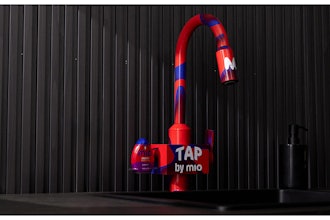
 Subham Sett
Subham Sett For all the interest and headlines generated by additive manufacturing—more commonly known as 3D printing—it still represents a small percentage of all manufacturing operations. Traditional subtractive manufacturing methods such as CNC machining and injection molding produce the vast majority of all parts manufactured at scale. The benefits of on-demand customization for small batches of personalized consumer products is evident. But we’re now beginning to see additive manufacturing used on a much larger industrial scale. Clearly, there’s a growing level of confidence in additive manufacturing, and that will create opportunities across a variety of industries. Here are a few examples:
Right Now – Customized Sporting Goods:
The performance of athletes can be altered significantly by seemingly small factors, like the fit of a shoe. Companies such as Reebok, Adidas and Nike have begun experimenting with 3D printing to create custom-fit sneakers for professional athletes in sports like basketball, baseball and track. Not only does the technology take advantage of better, more lightweight and breathable materials, it—in combination with 3D scanning—allows every shoe to be perfectly fit to a wearer’s foot, improving comfort and performance.
The Near Future – Transportation & Mobility:
Perhaps the best known of all additively-manufactured aerospace components is the fuel nozzle used in GE Aviation’s LEAP engine, which just recently passed the 30,000 printed parts mark. Yet 3D printing is clearly being used for other purposes as well. In recent years, Boeing and other aircraft manufacturers have begun installing 3D printed parts in their cabin interiors, reaping the benefits of reduced weight leading to lower fuel costs. Last year, Boeing went a step further by announcing the use of 3D printed titanium parts on its 787 Dreamliner…and for the first time, these parts will be structural components of the plane.
Further down the road – Personalized Healthcare:
Medical practitioners have long used a standard set of generic treatments on their patients. Suffer from high blood pressure? Here, take these pills. Break a leg? A few bone screws and plates will fix you right up. The hip implant you received last winter is quite likely the same model as the one being installed in your neighbor next week, and when you contract an infection, you’re going to receive the same antibiotics used to treat millions of other people, whatever their shape, size, or sex. Because every patient’s body is different, these one-size-fits-all treatments don’t always affect every person the same way.
Despite the seemingly impersonal nature of today’s health care, we are healthier, as a population, than we have ever been. Yet most in the medical community would agree that many treatments would be more effective if they could be tailored to the patient’s unique needs—if medications could be manufactured based on genetic makeup and body chemistry; if new bones could be produced with the same attributes and internal structures as the old, and fit better than a tailored suit.
The good news is that level of custom medical care is right around the corner. By giving physicians the ability to precisely model the human anatomy and then print replicas—and sometimes actual replacements—of various body parts, this convergence of technologies is changing the way medicine is being practiced. Further, 3D printing is (or soon will be) creating a host of patient-specific medications and surgical instruments, while offering medical researchers bold new insights into the way we humans work.
One example of this is the work done by Massachusetts-based Biomodex. The development of computed tomography (CT scans) followed by magnetic resonance imaging (MRI) greatly improved our ability to peer into the human body, but relying solely on these images to perform surgery is akin to a football player going into a big game without first warming up. Biomodex is changing this decades-old paradigm by converting scanned images of patient organs and other tissues into realistic 3D-printed models, giving surgeons a chance to practice and refine their techniques on polymer replicas before performing an actual surgery on a live patient. This leads to faster recovery times, lower surgical costs, and improved patient outcomes.
Yet additive manufacturing produces much more than body parts and prosthetics. Companies such as FabRx, a spin-off of University College London, are using 3D printers to improve the way we consume medications. FabRx’s so-called “Printlets” as well as other companies’ versions of 3D printed drugs, deliver personalized dosing, incorporate multiple drugs into a single polypill, and offer improved drug release profiles for aging or very young patients. These companies envision a future of on-demand drug dispensing, making pharmaceutical delivery no more difficult than buying a customized dog tag from a vending machine.
The ability to quickly and easily print virtually any shape imaginable has broad ramifications for all industries, but especially the biosciences. So, too, does 3D printing’s ability to combine multiple materials—some of which are living cells—into a single printed part:
- Researchers in Dresden Germany have printed the first “bots” for delivering anti-cancer drugs to patients with uterine cancer.
- A research project at The University of Minnesota is aimed at printing “stem cell-infused scaffolds” for treating patients with spinal cord injuries.
- Tissue engineers at Carnegie Mellon University are busy working on the world’s first 3D printed heart made from the patient’s own cells, while researchers at ETH Zurich have already made a functioning prototype from silicone, the stuff of cookware and contact lenses.
Scientists are still a long way from creating transplantable 3D printed human organs, but the future points to the eventual ability to repair—and even replace—hearts, lungs, bones and skin with patient-specific 3D printed replacements. Experts suggest that, within the next decade or two, “bioprinters” will leave the laboratory and enter the doctor’s office. Custom-made drugs, prosthetic devices, and surgical tools—most of them 3D printed—will also become commonplace.
Thanks to this convergence of 3D printing and software technology, medical care is about to become a lot more personal, literally. It might not make you look forward to your next doctor visit, but it could just save your life.
Subham Sett is vice president of marketing & strategic initiatives for SIMULIA at Dassault Systèmes.























